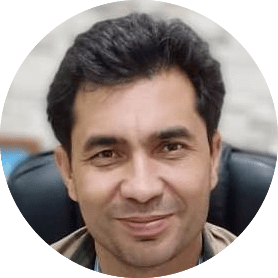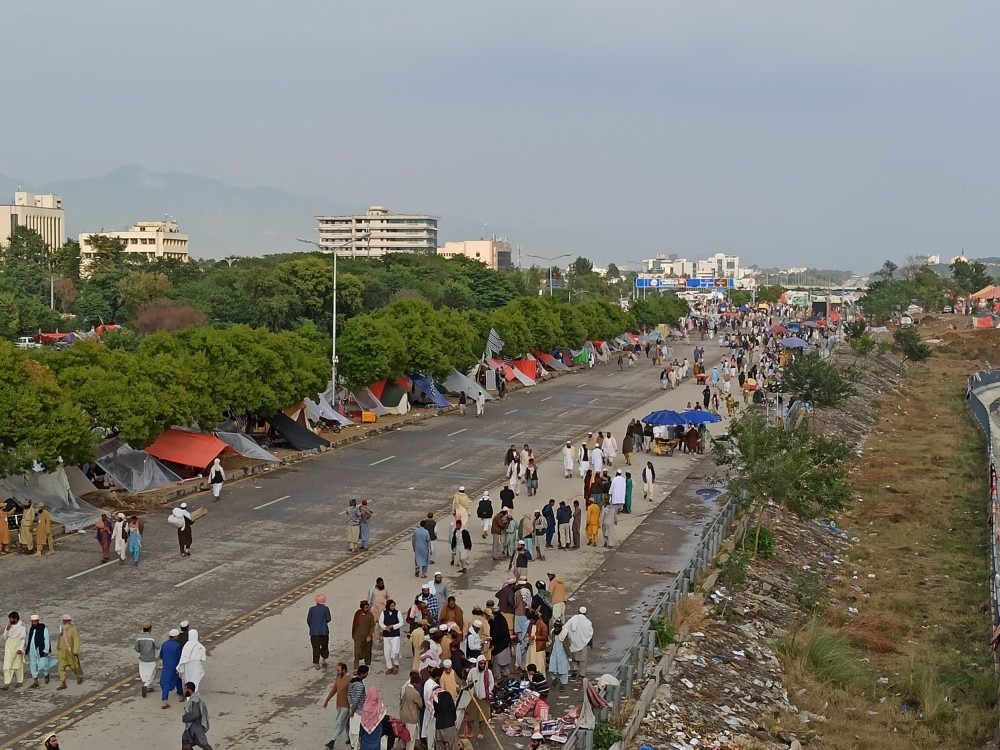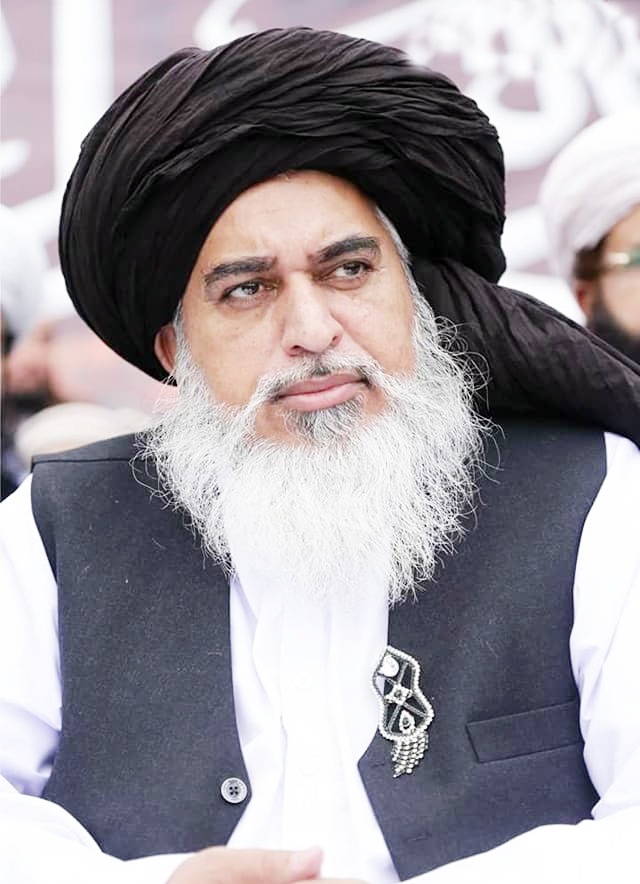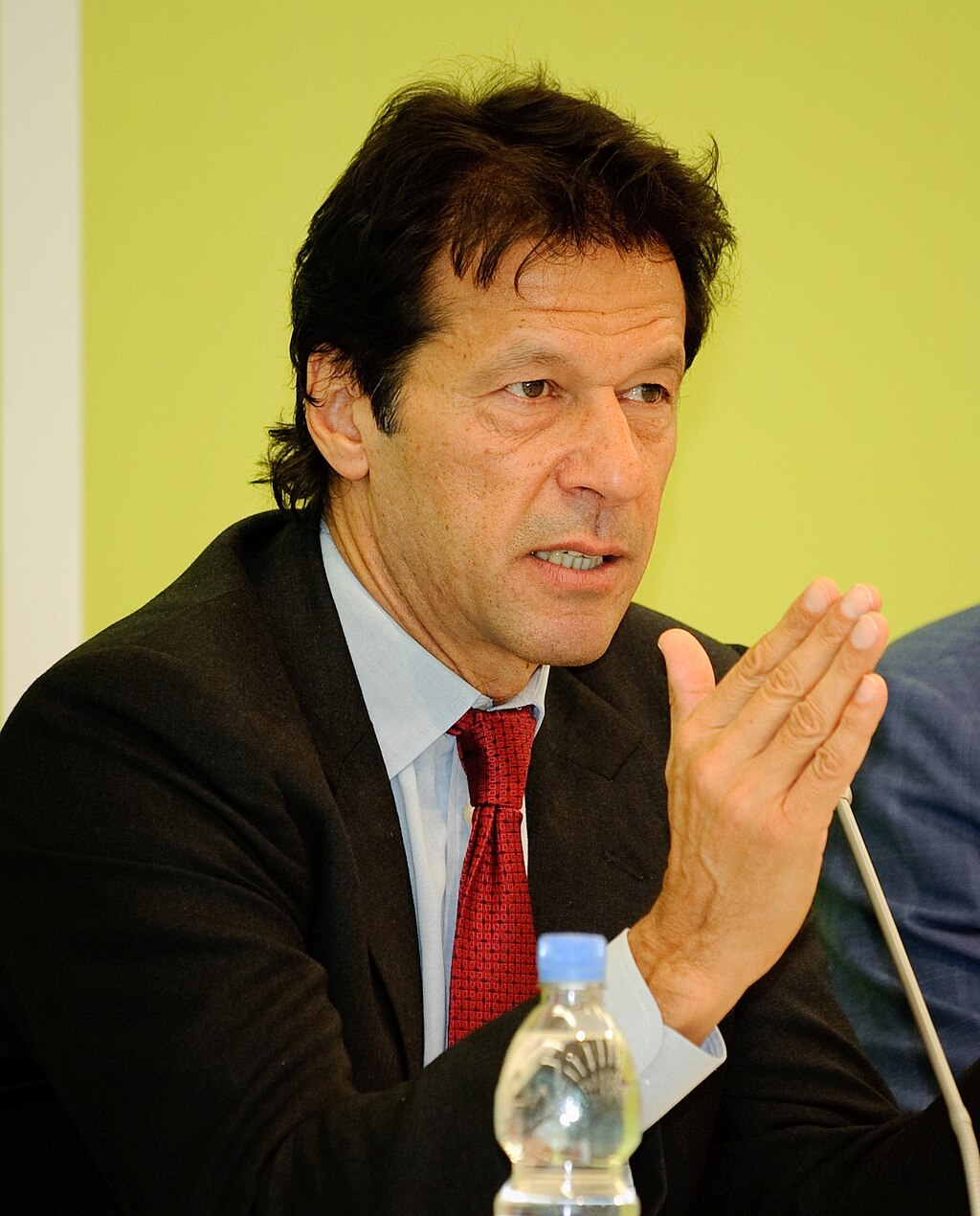Age of Protests

By Manzoor Ali
Staff Writer
27/11/2019

JUIF protestors along the Kashmir Highway
On 7th November, thousands of supporters of the Jamiat Ulema-e-Islam (F) (JUIF) Islamist group gathered on the Kashmir Highway in Islamabad under an overcast sky. The rain that lashed the city the night before and earlier that day had turned the ground by the side of the highway, where the JUIF supporters pitched their tents, to muck. They proceeded to block the highway with obstacles and to demand Pakistani Prime Minister Imran Khan’s resignation, claiming he was selected by the country’s powerful military establishment rather than being genuinely elected.
One of the protestors, Mohammad Hassan, 55, was from the city of Sukkur, where he works as a daily wage laborer, and is a father of eight. Hassan, who sported a long white beard, told me he travelled for three days in a caravan of protestors led by JUIF chief Maulana Fazlur Rehman to reach the capital. “We are here to send this…government packing,” he said.
The protest fizzled out a week later, having achieved nothing. This kind of sit-in, however, has been a feature of Pakistani politics for the past few years. The three governments that have been in power since 2013 have faced five such protests over a diverse range of issues.
This kind of sit-in has been a feature of Pakistani politics for the past few years.
In January 2013, Tahirul Qadri, leader of the Pakistan Awami Tehreek political party, led a long march on Islamabad to press for electoral reforms ahead of the upcoming elections. He and his supporters staged a peaceful sit-in outside Parliament House. The protest lasted just four days, with the government signing an agreement with protestors to reform the electoral system.
General elections were held in May that year, propelling the Pakistan Muslim League into power, but Khan (the current prime minister), who headed the Pakistan Tehreek-e-Insaf party, called the elections rigged and demanded an audit of the results in four constituencies. When the government failed to meet his demands after about 14 months, he too led a march, and was joined by Qadri and his supporters, who sought justice for his followers who had been killed in earlier clashes with the police.
This time, however, Qadri’s protest fizzled out without getting any concessions from the government. Khan’s protest lingered on for longer, lasting 126 days in total. In December 2014, however, the Pakistani Taliban attacked a school in Peshawar, killing 141 people, including 132 children. Since Khan’s party was in power in Peshawar, he was forced to end his protest to deal with this more pressing crisis.
These sit-ins were not always so ineffectual, though. In November 2017, an obscure Islamist group called Tehreek-e-Labbaik Pakistan protested a change in wording of an electoral oath declaring the Prophet Muhammad God’s final prophet, calling it heresy. Its supporters proceeded to block the Faizabad Interchange at the entrance to Islamabad, bringing the city to a standstill. After police attempts to dislodge the protestors led to the deaths of six of them and the injury of 200, the government capitulated to them, and the law minister reigned.

Khadim Hussain Rizvi, leader of Tehreek-e-Labbaik, who organized the November 2017 sit-in (Picture Credit: Inomanahmad)
Whilst demonstrations are certainly a part of democracy, and can function as an important check on power, there is a risk that these protests will allow a zealous minority to hold the country hostage and undermine elected governments. (There are rumors that some of these protests were masterminded by Pakistan’s powerful military and intelligence establishment to weaken civilian governments.) Indeed, during Khan’s protest in 2014, some of his political opponents warned him that his actions could threaten Pakistan’s fragile democracy, as it potentially paved the way for anyone who could assemble a motley band of 10,000 to bring down a sitting government.
There is a risk that these protests will allow a zealous minority to hold the country hostage and undermine elected governments.
Their warnings may prove prescient. Were it not for the fact that the leaders of the two main opposition parties, Asif Ali Zardari of the Pakistan People’s Party and Nawaz Sharif of the Pakistan Muslim League, are currently in jail for corruption, along with some of their close aides, those parties might have joined the JUIF’s protest and threatened Khan, whose party enjoys a razor-thin majority in the National Assembly. A protest with more staying power may well topple his administration.

Imran Khan, Prime Minister of Pakistan and former protestor
At the very least, such protests feed into the distrust many people feel for civilian leaders, harming both opposition and ruling parties, and strengthening the hand of the undemocratic military and intelligence establishment.
Before long, Khan, and the other politicians who encouraged the culture of sit-ins may learn that those who live by protests will die by protests.
